Welcome to one of the most active flamenco sites on the Internet. Guests can read most posts but if you want to participate click here to register.
This site is dedicated to the memory of Paco de Lucía, Ron Mitchell, Guy Williams, Linda Elvira, Philip John Lee, Craig Eros, Ben Woods, David Serva and Tom Blackshear who went ahead of us.
We receive 12,200 visitors a month from 200 countries and 1.7 million page impressions a year. To advertise on this site please contact us.
|

|
|
Palos
|
You are logged in as Guest
|
|
Users viewing this topic: none
|
|
Login  | |
|

   
Ricardo
Posts: 14806
Joined: Dec. 14 2004
From: Washington DC

|
 RE: Palos (in reply to Stoney) RE: Palos (in reply to Stoney)
|
|
|
Well you are asking to fill in and help wit a huge list there. Would take all night to fill in and clearify details for your "dictionary" of palos there. I will give you a hand by just filling in for some of the ones you left blank.
Bambera- a song that uses the compas of bulerias por solea, the thing to notice is how the song ends on the minor chord rather than the phrygian mode.
Cantes de Levante/de la mina- the general term for the whole family of cantes that include Taranto, Taranta, Minera, Cartegenera, Fandango Minero, Levantica, etc....essentially these are structured like a fandangos, and almost always free of compas.
Regarding baile, Taranto is usually the term used to describe the dance as a whole, which may or may not incorporate a number of cantes de levante....not just Taranto. The compas of 2/4 is imposed on those free cantes. It is always a challenge accompanying this baile for that reason, as each singer may interpret the time of the phrasing of the cante differently. In addition, many dancers incorporate more than the simple 2/4 beat, they may do Tientos type compas, or Tangos, even rumba at the end to speed up. Also, I have done choreographies that had bulerias compas, siguiriyas compas, fandango compas, etc....so rhythm is secondary to the songs and overall dance structure.
In terms of guitar, the palo names refer often to the key you play in. Taranta will be free in F#, perhaps loose 3/4 like fandangos, noticed in tremolos and arps for instance. Taranto as a guitar solo will pay homage to dance structure and have a 2/4 compas generally. Minera will be free like Taranta, but in the key of G#. Never heard any other cante de la mina palos used as a term for a guitar solo.
Fandanguillo- the term used to describe a fandango, if you are IN huelva. Whenever you are not it Huelva you call this "fandango de huelva"....a general term for any fandangos you might play/sing and keep compas.
This is to contrast simply "fandangos" which may not use compas at all. The proper term for this is "fandango naturales" or "fandango personales", and usually based on a personal version or one by a famous cantaor from the past. For example "fandango de Niño de Gloria". A term also used for these free rhythm fandangos is "fandango grande".
The fangangos from huelva each have a specific name, and man there are too many to mention here. There is an anthology of just fandangos de huelva I have seen, it has like 20 CD's! 
Garrotin is a song that uses compas of rumba. It is usually danced, not much of a heavy cante or guitar feature, although some nice pieces have been done based on the form. Note Manolo Sanlucar and Rafael riqueni's versions...
Jabera-a song similar to Verdiales, often used to end up a free malagueña cante if desired to go into compas.
Liviana- a mountain song that is very lyrical (like malagueñas, verdiales etc) but uses the compas of siguiriyas. I personally put it in the same category as Serrana (same deal lyrical song with compas of siguiriyas) and also polo and Caña. Those two are also very lyrical songs that use compas of Solea. I personally don't see that just cuz they use those compases that the melodic part of the songs are related or evolved to present forms of siguiriyas/solea. I think the compas was imposed on the songs (similar to what baile did to taranto), but that is just my opinion.
Interms of guitar, you would see a solo siguiriyas typcially por medio, and a solo "Serrana" in E phrygian, both with same compas and types of falsetas.
Malagueñas and Granainas are evolved fandangos that probably had personal origins. Often singers will do both malagueñas and granaina or media granaina back to back, hence some confusion to which might be the proper term. Even media Granaina and Granaina got switched around thanks to bad record labels in the days of Chacon.
In terms of guitar solos, Malaguena is done in E phrygian, and Granaina in B phrygian. Accompanying cante need not matter the key you play. R. Montoya played for Chacon in F# phrygian for some malaguena for example.
Cantiñas are a family of songs from cadiz that include Alegrias, Romeras, Caracoles, Mirabra, Rosas etc. The key, again, need regarding arriba or por medio or C major, only matters to the range of the singer, not to define the aire of the song, as happens with cantes de la mina for example. You can have mirabra sung in C major or A major for example.
Petenera- uses compas like Guajira but in minor key. Considered bad luck because a dancer died performing this. Don't play this for gitanos and don't ask them to play it for you! A famous song is Cafe de Chinitas by lorca.
Rondeña- a verdiales type song like Jabera. Again could be used to end a Malagueña, same compas as verdiales.
Rondeña- for guitar solo, a free style piece set to a special tuning as developed by Ramon Montoya, DADF#BE, but with tonal center C# phrygian. Not related to the cante at all in this sense, but Paco De lucia set this to compas of fandangos, so it is popular to think of it that way nowadays. As a tonal setting many guitarist have imposed any compas over this tuning, or used to accompany any cante that has the key of C# phrygian. (4 por medio or higher).
Saeta-religious, christian, similar to call to prayer of arabic. related to tona and martinete, the precursors of siguiriyas and uses that compas if you must.
Solea por buleria-now a days it is a dance or guitar piece, a fast solea or a slow bulerias, how ever you see it. There was never a cante called that though. In old days you had Solea de jerez as far as cante goes, and the guitar would play por medio and faster than normal solea, but slower than bulerias. That is just how they did solea in jerez. Also the cante "bulerias por solea" also called "bulerias pa escuchar", could get thrown in the mix. Guitar solos would just be "solea por medio". Again for cante or baile you could play por arriba but the tempo and aire give you the "solea por buleria". So simply put, you could use the terms "Solea", Solea por medio, bulerias por solea, to describe the same thing as "solea por bulerias". The earliest example of that term I have heard was on a sabicas record where he played Solea por medio then ended it with a fast bulerias. Since then it seems the term has stuck and describes dance and cante because of key and tempo/aire.
Tanguillo is, like rumba, better thought of as 2/4, but with a triplet meter. 6/8 is a better concept for the rhythm. The feel can switch between the two, but the beat of 2 is kept solid. Zapateado would be like footwork for this rhythm (like in Alegrias you have the escobilla section of dance). As a guitar compostion, it is most often a straight 6/8 without the up beat accent that Tanguillo uses. Vicente Amgio contrasts these two palos, and the different feel of the rhythms on his album Vivencias Imaginadas, with a modern interpretation of course. But for understanding the relation of the two rhythms, that is a good example.
Zorongo- specifically a song by Garcia lorca. It uses compas of bulerias.
_____________________________
CD's and transcriptions available here:
www.ricardomarlow.com
|
|
|
|
REPORT THIS POST AS INAPPROPRIATE |
Date Jan. 5 2010 15:39:43
 |
|

   
Ron.M
Posts: 7051
Joined: Jul. 7 2003
From: Scotland

|
 RE: Palos (in reply to Stoney) RE: Palos (in reply to Stoney)
|
|
|
You may have picked me up the wrong way on my comment on the "free" forms there Stoney.
These are not some "old" or "traditional" forms which are now neglected by the "modern" players!
It's just that generally, in my experience in Andalucia, solo guitar in large doses is really appreciated only by other guitarists.
While the Spanish, in my experience, are very appreciative of excellence and artistic mastery, a general Flamenco "peña" type audience will get bored pretty quickly with them.
A long and soulful and introspective Tarantas solo will have them starting to lose interest after a few minutes.
Follow that with another long and soulful Granainas, and they'll all be up at the bar! 
(Actually, in practice, someone will probably just treat what you've played so far as a long "intro" and start singing anyway!   ) )
General non- Flamenco audiences in "foreign" counties, however will be far more respectful, as they are more used to Spanish guitar played in a more formal "recital" setting as in Classical.
I was only suggesting that in making a start in this music, it can be helpful to kinda group some forms together as to their general compás structure rather than by any historical roots etc.
This is more practical to do from a guitar learning viewpoint, unless you would rather be a Flamencologist!
You've gotta learn this a bit like learning a language.
You don't buy a dictionary and learn all the meanings and origins of words that begin with A and work your way through to Z.
You learn a few nouns and verbs etc used in everyday life and string them together to form a few simple sentences and then start to expand from that.
The reason why I chose my examples is because IMO, if after say 2 years of study/practise, someone can understand and play very basic, medium-speed chording compás plus one or two simple falsetas for Solea, Alegrias, Bulerias, Tangos and say Siguiriyas...and play with good, steady timing, then they have done very, very well indeed as they will have a grasp of the very core elements and structure that is at the heart of this music and which makes it completely unique.
On the other hand, someone who after 2 years study/practise can play a complete Farruca solo, a complete Tarantas solo and a complete Zambra solo, will have travelled not much further than the starting gate and will still have a mountain climb ahead.
Of course all this is if the person actually wants to learn Flamenco.
If all they want to learn is Flamenco-"ISH" music and make up their own stuff as quickly as possible...
Then ANYTHING goes.....just play anything that sounds good to your ear.
That's my view anyway..
cheers,
Ron
|
|
|
|
REPORT THIS POST AS INAPPROPRIATE |
Date Jan. 6 2010 1:13:08
 |
|

  
Stoney
Posts: 132
Joined: Nov. 6 2009

|
 RE: Palos (in reply to Jim Opfer) RE: Palos (in reply to Jim Opfer)
|
|
|
It's not that I don't see the point of focusing on the 12 beat toques, but it seems to me that depending on where you are, the audience is going to be very distinct. (my condolences to anyone who wants to play real flamenco in Santa Fe, New Mexico - Ottmar has ruined that audience completely)
However, my concern lays in two areas. 1. How do you get started on basic techniques unless you have something simple to play.
2. Doesn't anyone think it sad that some styles may eventually disapear completely?
When I started there were only 2 people in town that could play Flamenco. This was pre-Juan Martin instructional material. No one except on old man from Spain could play Bulerias. So I learned Sevillanas, Rumbas, Solea and Alegrias first, then Farruca, Zapateado etc. Finally the old man taught Bulerias to one person who passed it along. Then the Juan Martin stuff became available and everyone went their own way. But without the skill set I had already learned I wouldn't have been able to do anything with those vids.
Aside from just learning and repeating a bunch of falsetas, IMHO it should be the ambition of any guitarist of merit to "Grab and Hold" the audience attention with any palo. If the audience of today is so jaded they only want to hear certainb palos, I'd say that's a sad statement on the state of Flamenco as we know it.
Stoney
PS. My statement wasn't meant to be aimed at any one person. I realize Ron that you were only stating what you see and not necessarily your own personal opinion on the value of these forms as art. I just think it's kind of sad.
|
|
|
|
REPORT THIS POST AS INAPPROPRIATE |
Date Jan. 6 2010 5:15:17
 |
|

   
Ron.M
Posts: 7051
Joined: Jul. 7 2003
From: Scotland

|
 RE: Palos (in reply to kozz) RE: Palos (in reply to kozz)
|
|
|
That's why I think it's best to just view it as a hobby and just play out of interest.
There's not enough of a Flamenco audience in any of the smaller European countries to provide a regular income for a performer.
You can attract bigger, more general audiences by making it a bigger show with dancers and perhaps some token cante.
For a single "recitalist", you would have to be at near-virtuoso level to get folk to travel any distance or pay much money to hear you.
They are then entertained by the pyrotechnics even if they don't understand the music.
Even then, you are gonna have to be prepared to travel countrywide or even Europewide and after you factor in the cost of hotels, meals and travelling expenses, I doubt if it would be viable unless you have a reasonably well-known name.
Folk like Nuñez playing at his level and with his reputation can make a good income by giving concerts all over the world with a small group, but he wouldn't be able to give regular weekly concerts only around London and still make a living.
Most lesser guitarists make most of their income from giving lessons.
If you are lucky enough to get work in a Spanish Restaurant or something then you are seriously gonna have to dilute and dumb down your repertoire.
In short...if you want to make a living as a musician, DON'T choose Flamenco! 
BTW: I am not speaking from experience here, only what I would imagine the situation to be.
If anyone is having a better experience, I would certainly be very happy to hear it!
cheers,
Ron
|
|
|
|
REPORT THIS POST AS INAPPROPRIATE |
Date Jan. 6 2010 7:19:15
 |
|

   
Ricardo
Posts: 14806
Joined: Dec. 14 2004
From: Washington DC

|
 RE: Palos (in reply to Ron.M) RE: Palos (in reply to Ron.M)
|
|
|
quote:
ORIGINAL: Ron.M
That's why I think it's best to just view it as a hobby and just play out of interest.
There's not enough of a Flamenco audience in any of the smaller European countries to provide a regular income for a performer.
You can attract bigger, more general audiences by making it a bigger show with dancers and perhaps some token cante.
For a single "recitalist", you would have to be at near-virtuoso level to get folk to travel any distance or pay much money to hear you.
They are then entertained by the pyrotechnics even if they don't understand the music.
Even then, you are gonna have to be prepared to travel countrywide or even Europewide and after you factor in the cost of hotels, meals and travelling expenses, I doubt if it would be viable unless you have a reasonably well-known name.
Folk like Nuñez playing at his level and with his reputation can make a good income by giving concerts all over the world with a small group, but he wouldn't be able to give regular weekly concerts only around London and still make a living.
Most lesser guitarists make most of their income from giving lessons.
If you are lucky enough to get work in a Spanish Restaurant or something then you are seriously gonna have to dilute and dumb down your repertoire.
In short...if you want to make a living as a musician, DON'T choose Flamenco! 
BTW: I am not speaking from experience here, only what I would imagine the situation to be.
If anyone is having a better experience, I would certainly be very happy to hear it!
cheers,
Ron
   Um, no....no....no....and no. Um, no....no....no....and no.
2 things.....some guitarists actually ENJOY playing with a group or accompanying. THat is why they do it, not to make MORE money or grab a bigger dumber audience. And second, why would someone like gerardo, or any player in the world whatever level, WANT to play concerts or gigs ONLY around London???????? That makes no sense. Any performer would want to play anywhere in the world they could, I think is a pretty simple concept. For the record, I am not the only guitarist in my area that makes a living from flamenco.
No need to dumb down anything for any venue. Play with your heart is most important. It may be hard to believe, but I actually enjoy playing rumba, especially with other good rumberos. I would rather do that then perform with bad flamencos to be honest, or snobby ones or whatever. and I am not afraid to play something heavy and libre for a Rumba audience.
Man this is as frustrating as the time that backpacking computer geeks said at FT, "hey to all the young up start players, just do it as a hobby cuz all the flamencos I saw backpacking through europe were washed up poor drunks who had to teach to live"....total BS crappolla!!!  
Stoney, I will give my condolences to Yiyi and Chuscales for you who have been doin hardcore flamenco in Santa fe for decades. You are welcome for the info you asked for, or if you don't like some of the stuff I wrote or don't care about it (it took a lot of time darn it) I will be happy to delete all that crap too. Sheesh.
quote:
Perhaps one question:
How are the palos defined in general....is it mostly based on the cante?
Um after all that speil about cante de levante etc, you did NOT just ask that             
Ok bad mood guys sorry
_____________________________
CD's and transcriptions available here:
www.ricardomarlow.com
|
|
|
|
REPORT THIS POST AS INAPPROPRIATE |
Date Jan. 6 2010 9:33:02
 |
|

   
Ron.M
Posts: 7051
Joined: Jul. 7 2003
From: Scotland

|
 RE: Palos (in reply to Ricardo) RE: Palos (in reply to Ricardo)
|
|
|
quote:
why would someone like gerardo, or any player in the world whatever level, WANT to play concerts or gigs ONLY around London???????? That makes no sense.
I didn't imply that Ricardo  , ,
You understood what you WANTED to (mis) understand about that.
What I was saying that in order to make a living you need regular gigs.
The audience for genuine Flamenco music is pretty limited in the UK, even in a big city like London, so you could not really do weekly gigs even there and make a living solely from that, without teaching or something else.
Not even Gerardo Nuñez could. (not that he'd want to.)
Meanwhile there are plenty little Pop bands, Folk singers and Irish bands who can make a small, but adequate living from playing the many pubs and clubs in the area without having to travel too far from home.
Sh*t, there are even some guys I know here in the far flung wasteland of Aberdeen in the North of Frozen f*cking Scotland who have a local hotel residency of 3 evenings a week at £120 an evening = £360 a week each just as "steady" income!
In the Summer they can work as many evenings as they want, or perhaps pick up a month or two on a cruise ship for £2000+ a week all found!
(One is a folk singer/guitarist, the other does cover versions of Eagles/Country/Rock type stuff, got rid of the drummer and keyboards player by making his own backing tracks and is just singing and playing guitar.)
Plus their little one-offs in the outlying small towns in the area and cooperative ventures with other players for local festivals etc.
They're not rich, but get by and have heaps of spare time for other things, like lying in bed while others are battling through the snow to get to work for 8.30am!
Pub and club venues etc want bums on seats and folk buying drinks.
If you can't do that you're out on your arse....simple as that.
As a pub owner said, "I don't judge the stuff...the cash register at the end of the night does".
quote:
total BS crappolla!!!
I have no knowledge of the Flamenco scene in the USA.
Completely different demographic, with a large Hispanic content.
If it's thriving there and you are getting by fine, then great...I'm happy for you.
But don't f*cking well jump on me for just bloody well stating the facts in the UK.  
cheers,
Ron
|
|
|
|
REPORT THIS POST AS INAPPROPRIATE |
Date Jan. 6 2010 10:49:51
 |
|

  
KMMI77
Posts: 1821
Joined: Jul. 26 2009
From: The land down under

|
 RE: Palos (in reply to Jim Opfer) RE: Palos (in reply to Jim Opfer)
|
|
|
quote:
but if someone asks something, and get such a long and detailed answer ....at least a little "thank you" or "no i don't agree" or ...... thats the very least one could have expected.
I agree, Thanks for that information Ricardo. I appreciate your concise explanations. You have clearly invested a lot of time into researching the origins of the cantes.
I play regularly with another guitarist in a very busy spanish restaurant here in australia. The noisy environment and the fact that most people are looking to have a few drinks and a good time, usually results in us playing palos like bulerias fandangos, cantinas ,alegrias, rhumba, sevillanas etc... I enjoy playing these styles as much as taranta, siguiryas, solea granainas.. Most guitarists who i have come across that say i don't like rhumba, It's not flamenco etc.... Usually can't play rhumba and strum it unevenly in a way that allows little interaction.
There is a guitarist that lives in brisbane who in my opinion is one of the most amazing composers and technical guitar players i have come across. I remember one night in a loud noisy restaurant. We were sitting at a table and he began playing a tremelo piece for me that he had just written. The music was quite dark. He has an amazing command over the instrument and within a matter of minutes the restaurant containing 80 people or more were brought to silence. He was playing acoustically by the way. I will always remember that evening. I am sure that if someone had played a rhumba or bulerias after that performance the people would have continued talking. 
It's hard to generalize about what people want to hear at gigs. 
_____________________________
|
|
|
|
REPORT THIS POST AS INAPPROPRIATE |
Date Jan. 6 2010 18:00:50
 |
|
 New Messages New Messages |
 No New Messages No New Messages |
 Hot Topic w/ New Messages Hot Topic w/ New Messages |
 Hot Topic w/o New Messages Hot Topic w/o New Messages |
 Locked w/ New Messages Locked w/ New Messages |
 Locked w/o New Messages Locked w/o New Messages |
|
 Post New Thread
Post New Thread
 Reply to Message
Reply to Message
 Post New Poll
Post New Poll
 Submit Vote
Submit Vote
 Delete My Own Post
Delete My Own Post
 Delete My Own Thread
Delete My Own Thread
 Rate Posts
Rate Posts
|
|
|
Forum Software powered by ASP Playground Advanced Edition 2.0.5
Copyright © 2000 - 2003 ASPPlayground.NET |
0.109375 secs.
|


 Printable Version
Printable Version



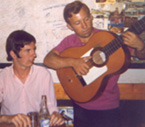



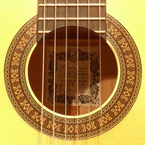
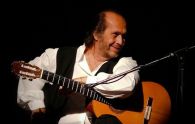



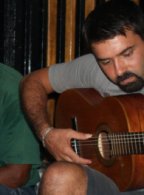



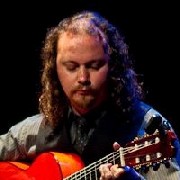
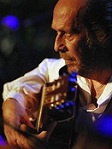
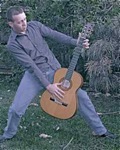


 New Messages
New Messages No New Messages
No New Messages Hot Topic w/ New Messages
Hot Topic w/ New Messages Hot Topic w/o New Messages
Hot Topic w/o New Messages Locked w/ New Messages
Locked w/ New Messages Locked w/o New Messages
Locked w/o New Messages Post New Thread
Post New Thread